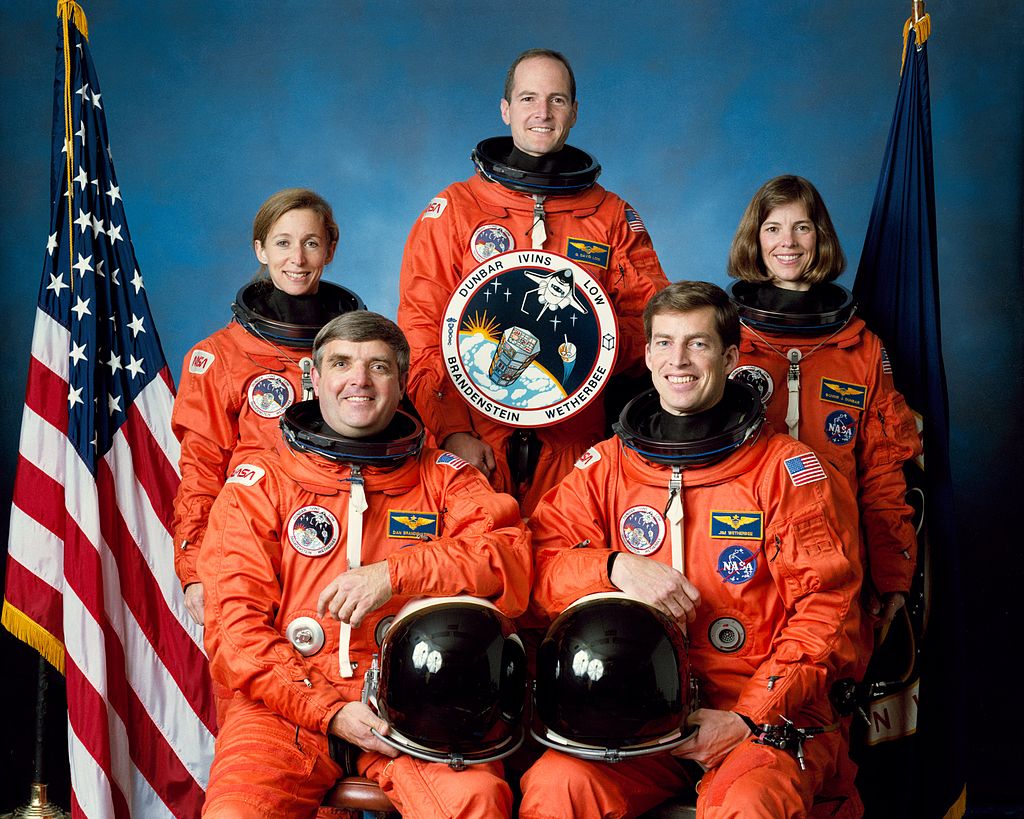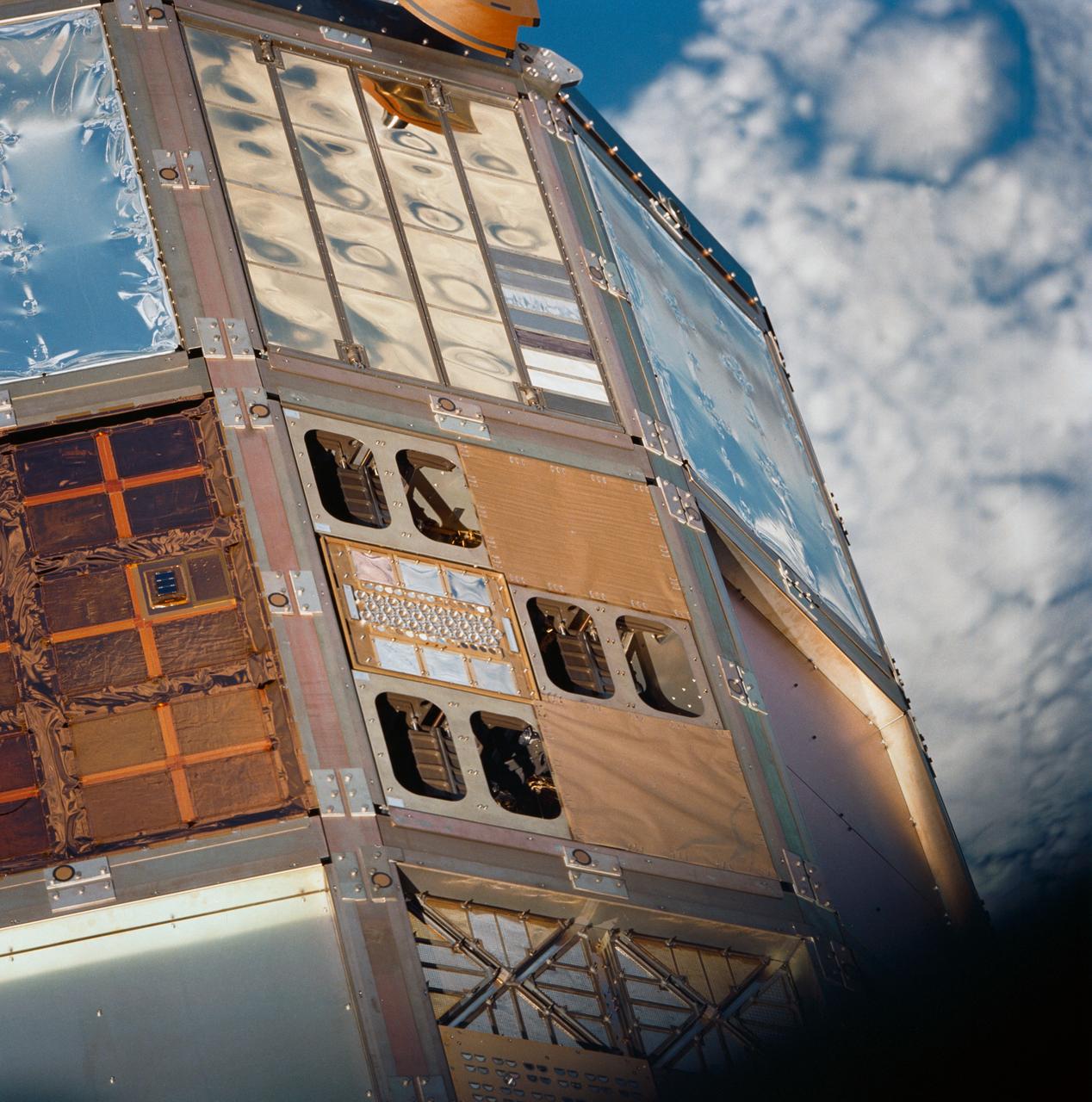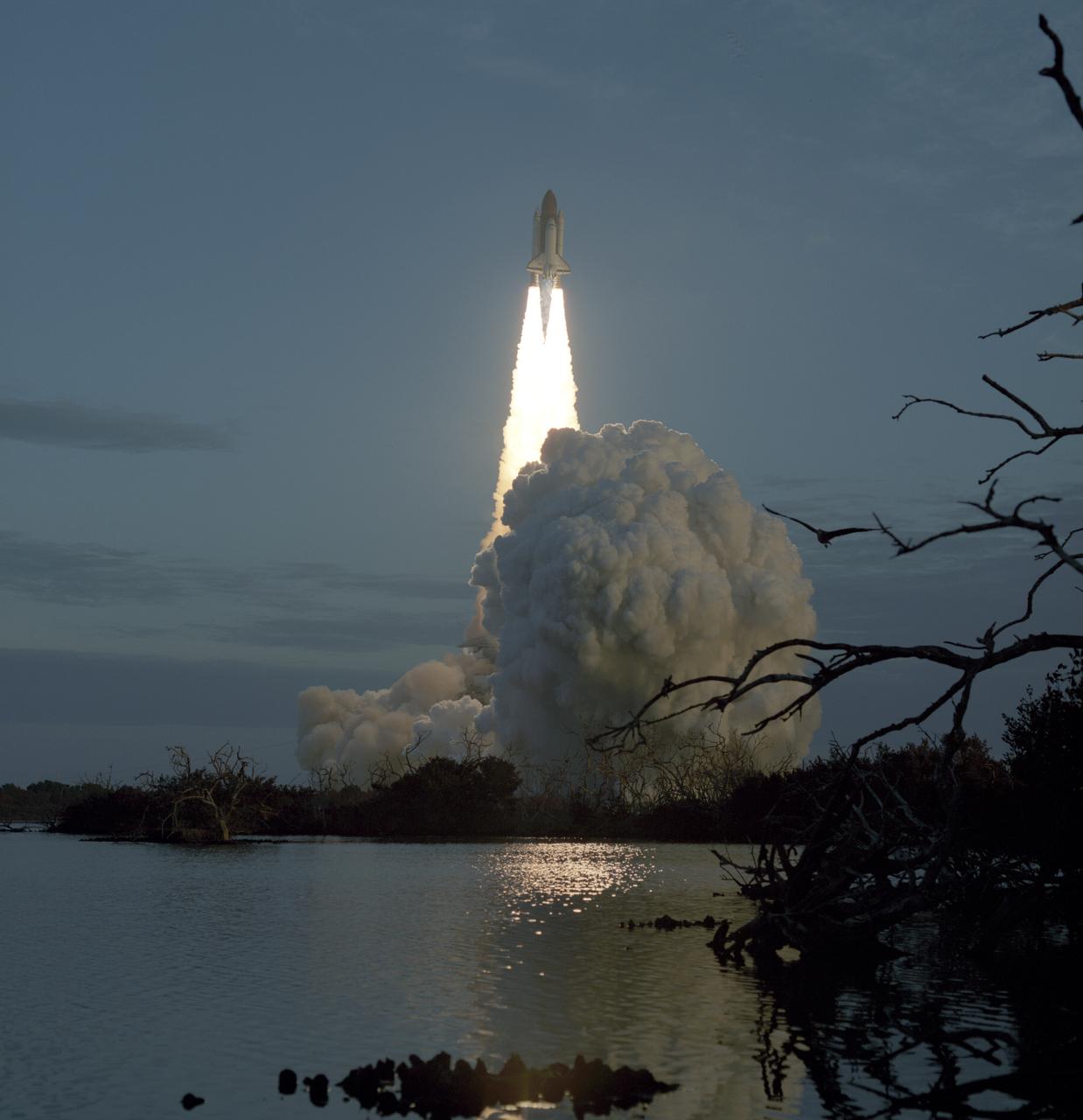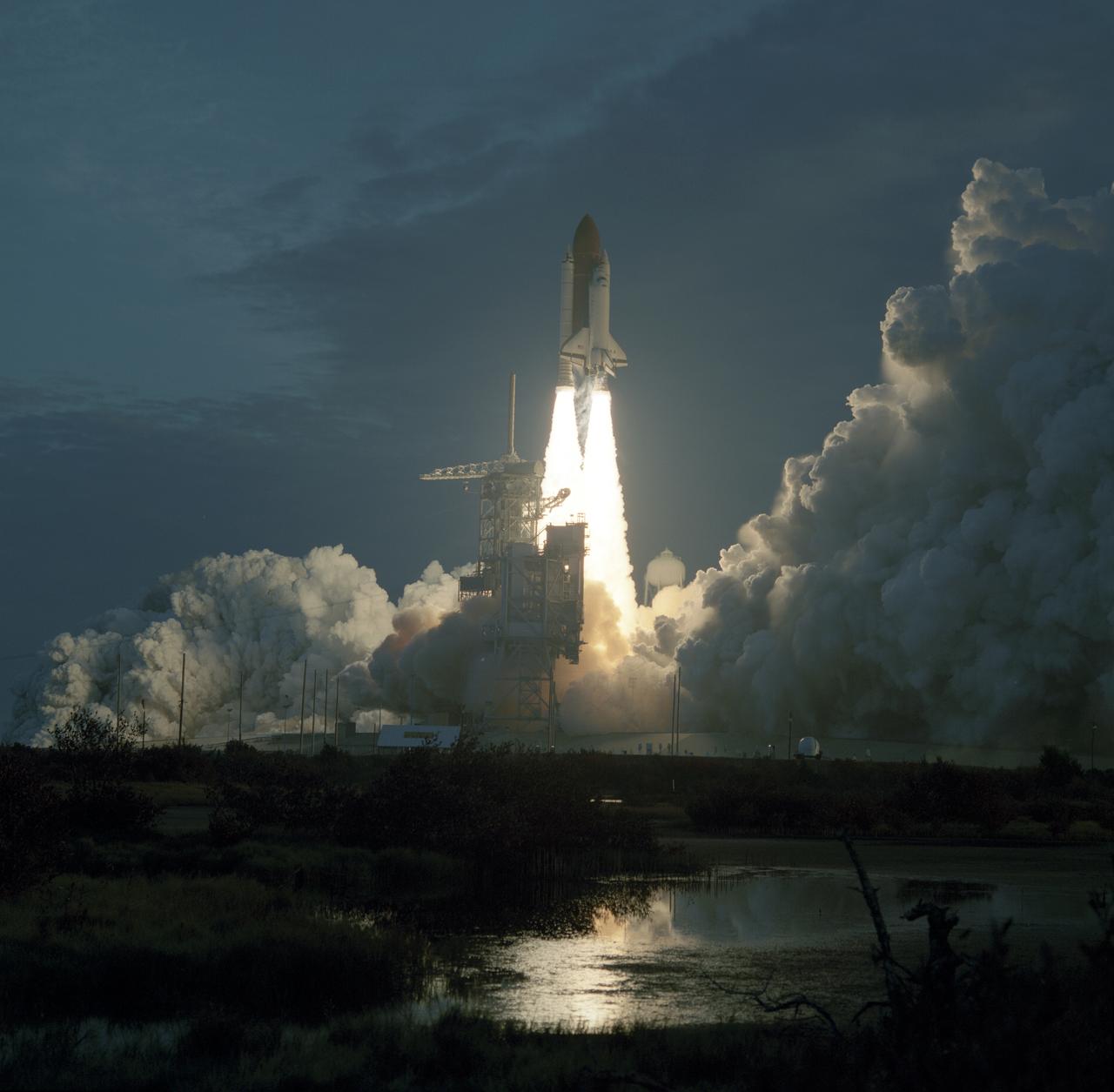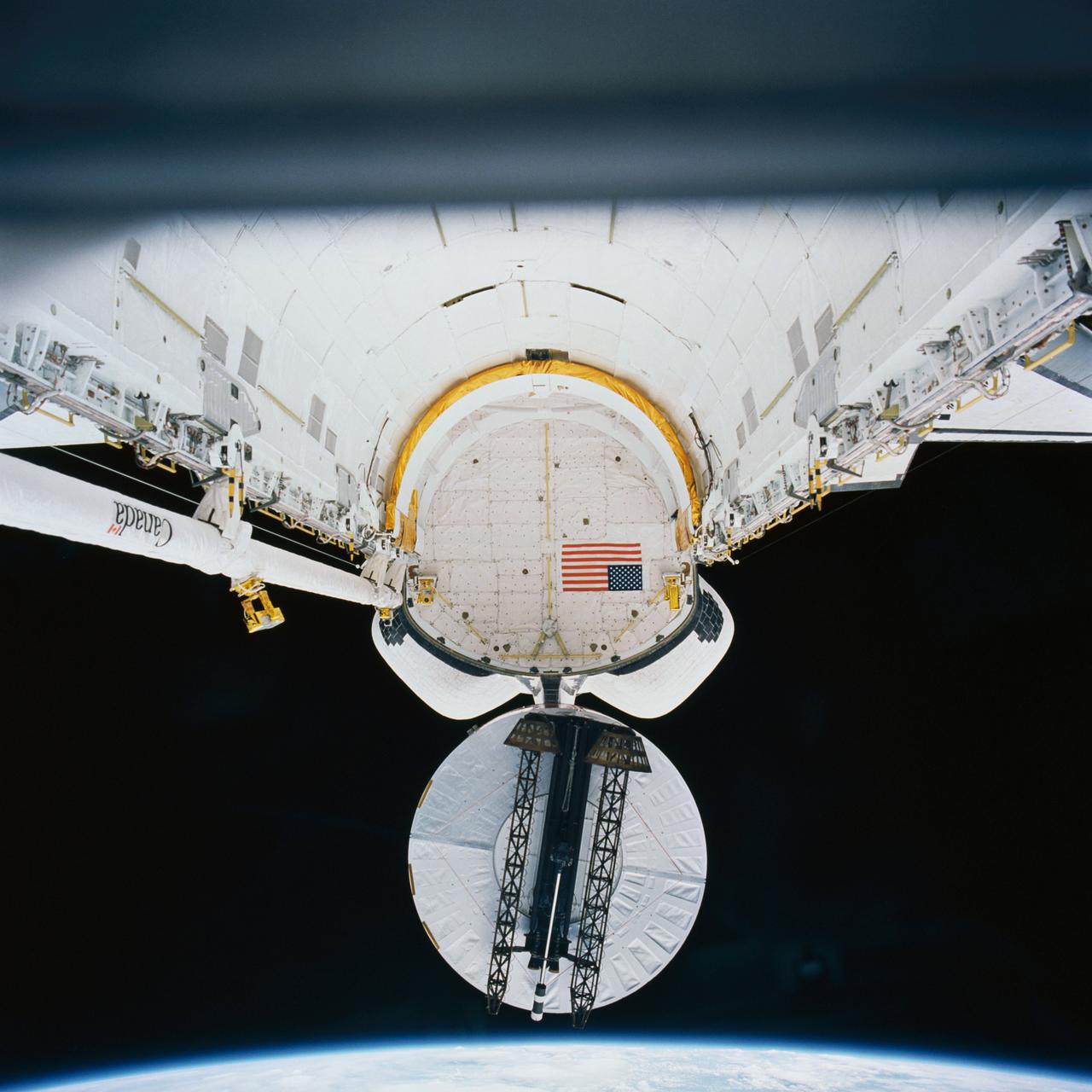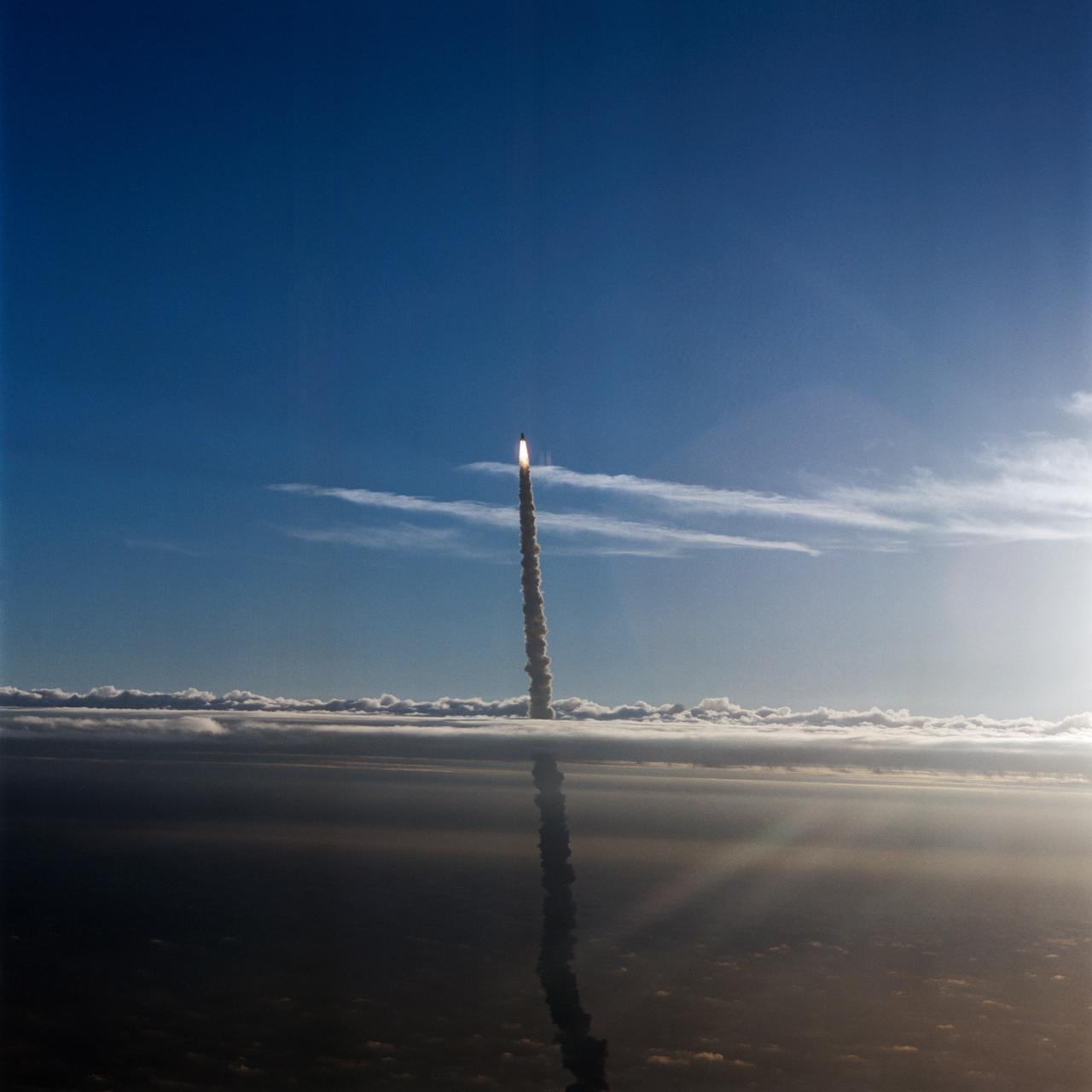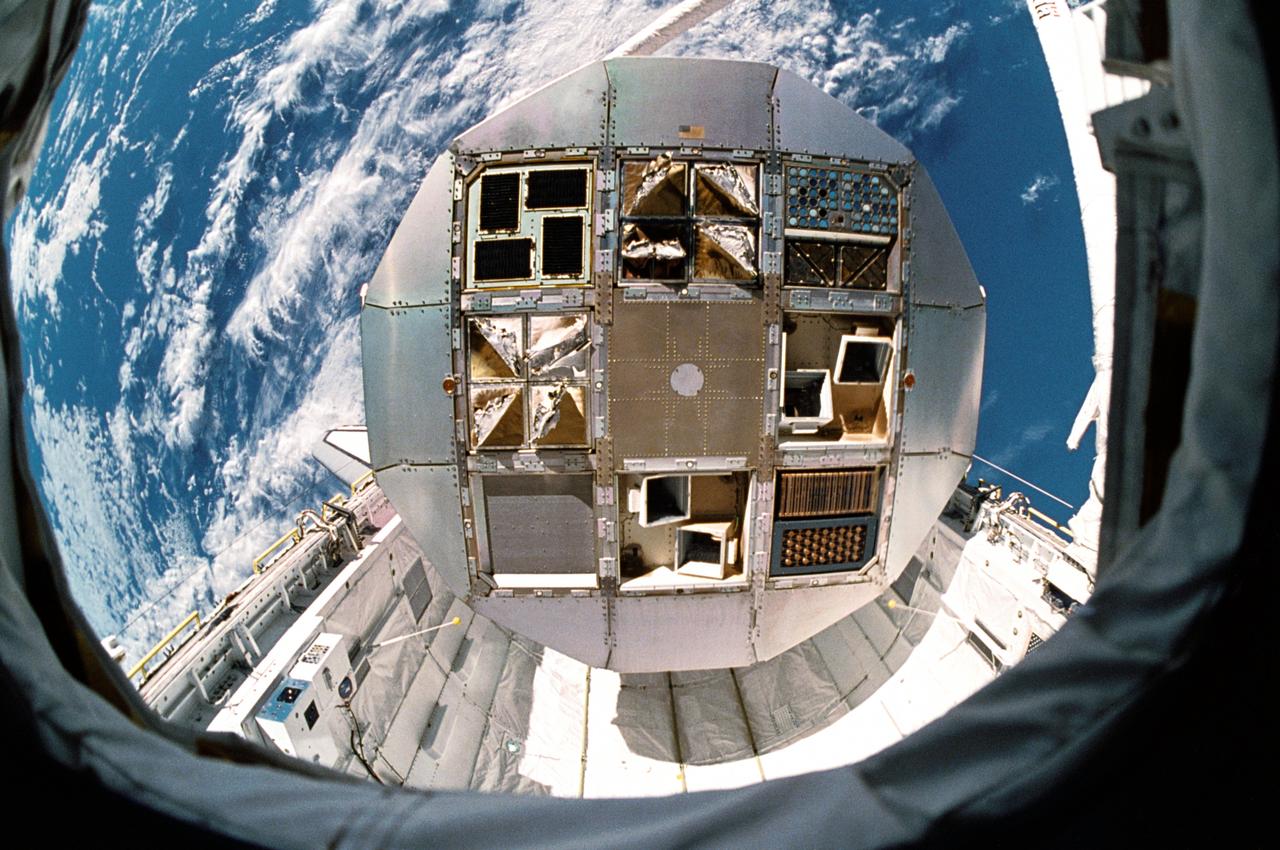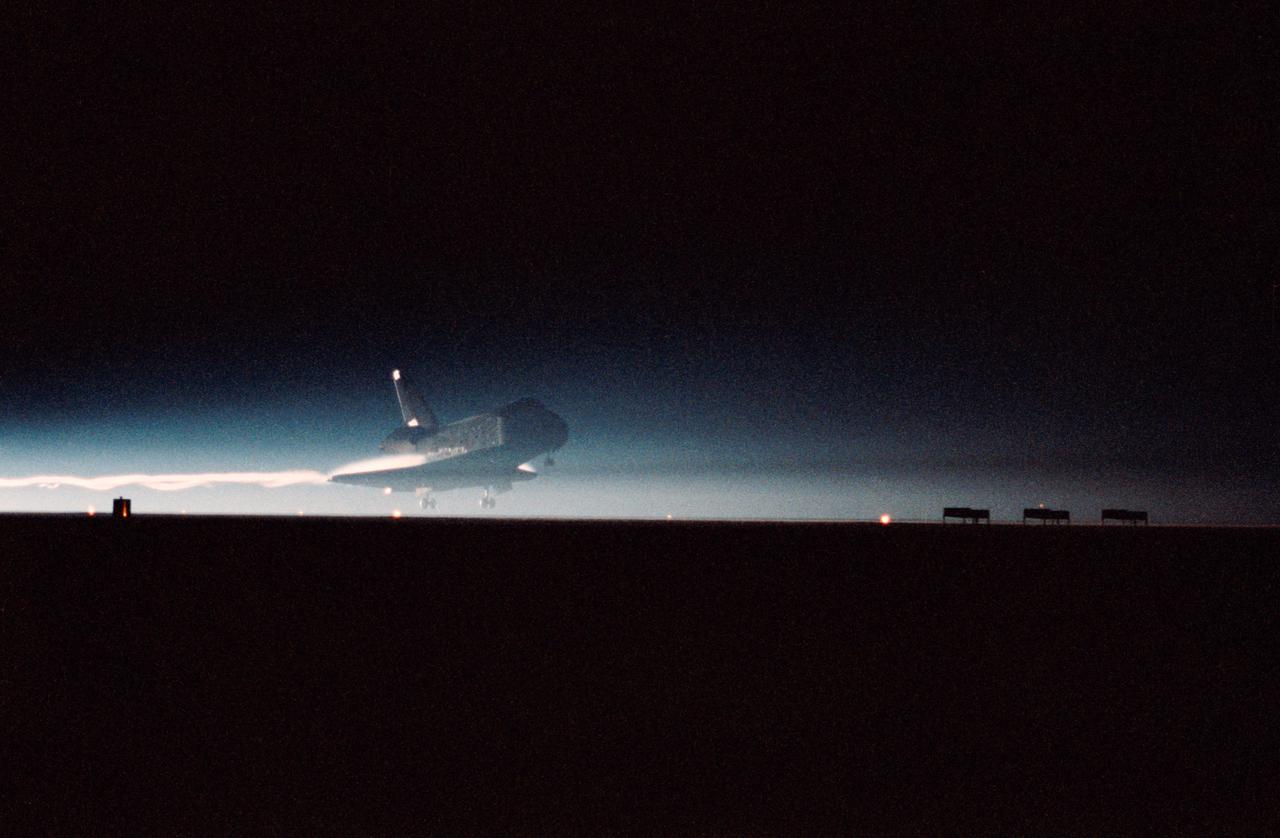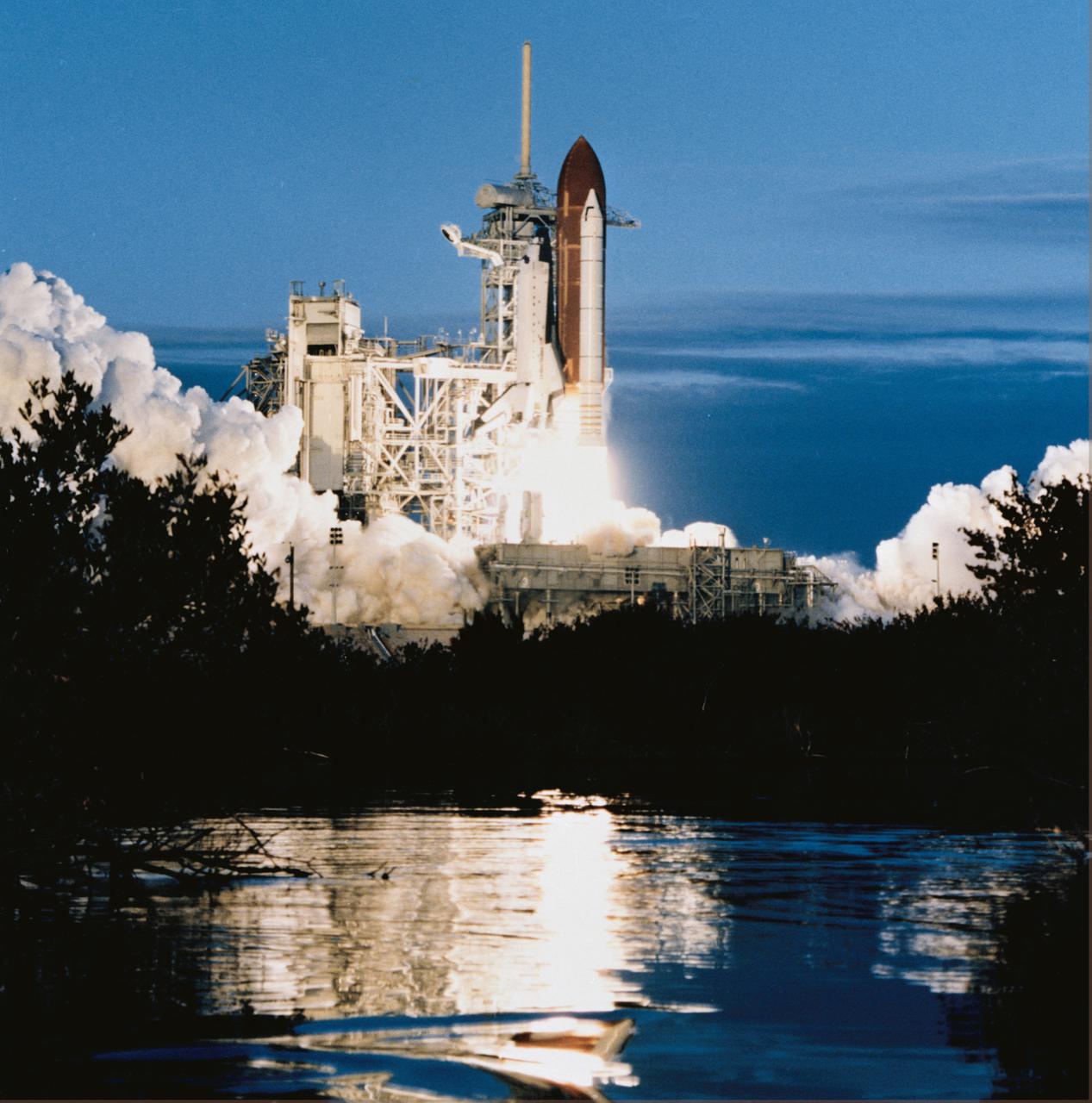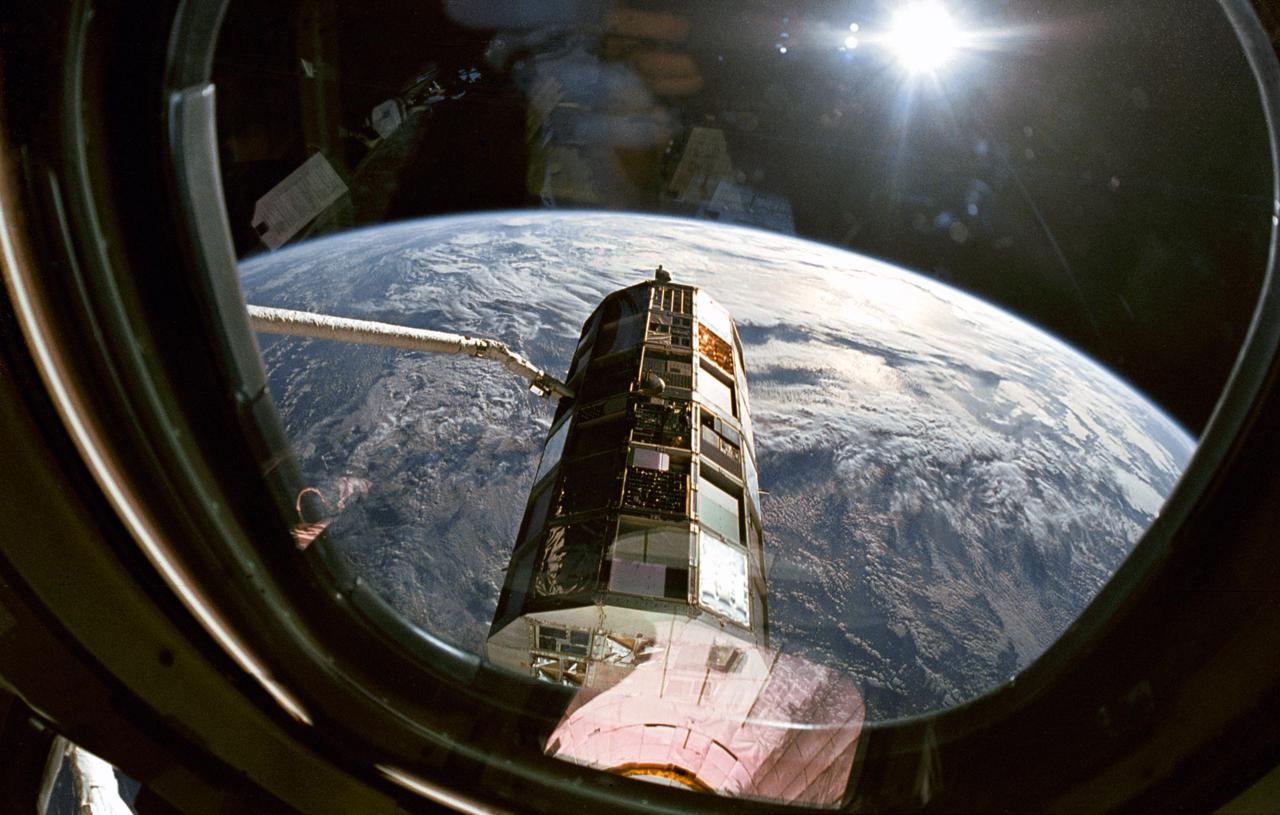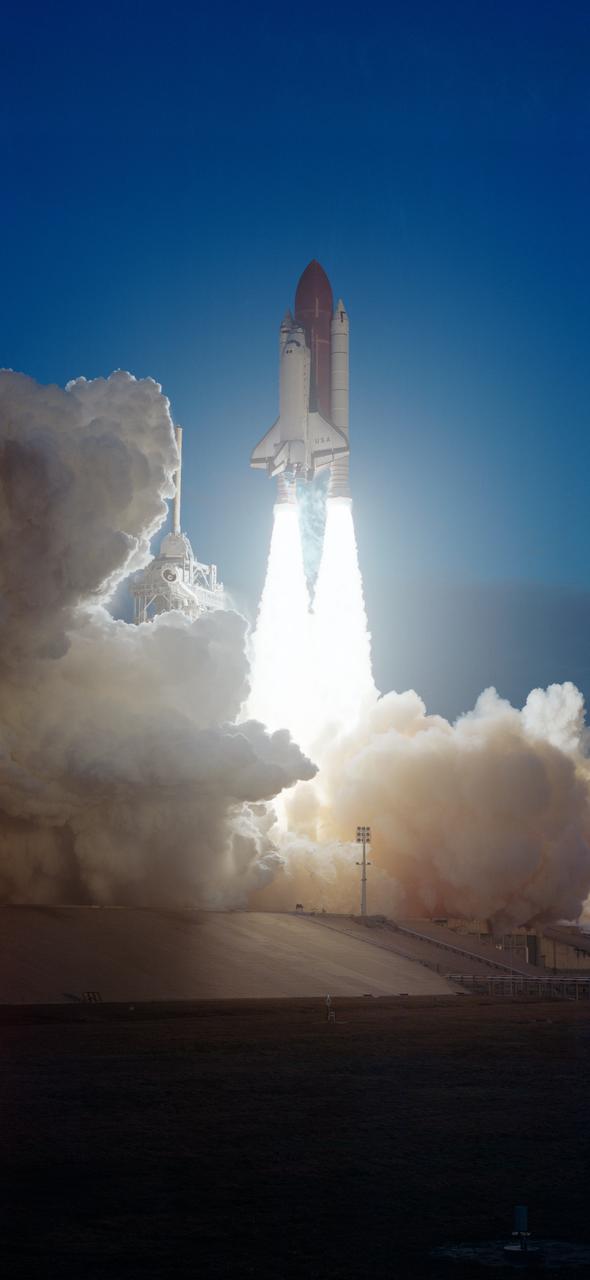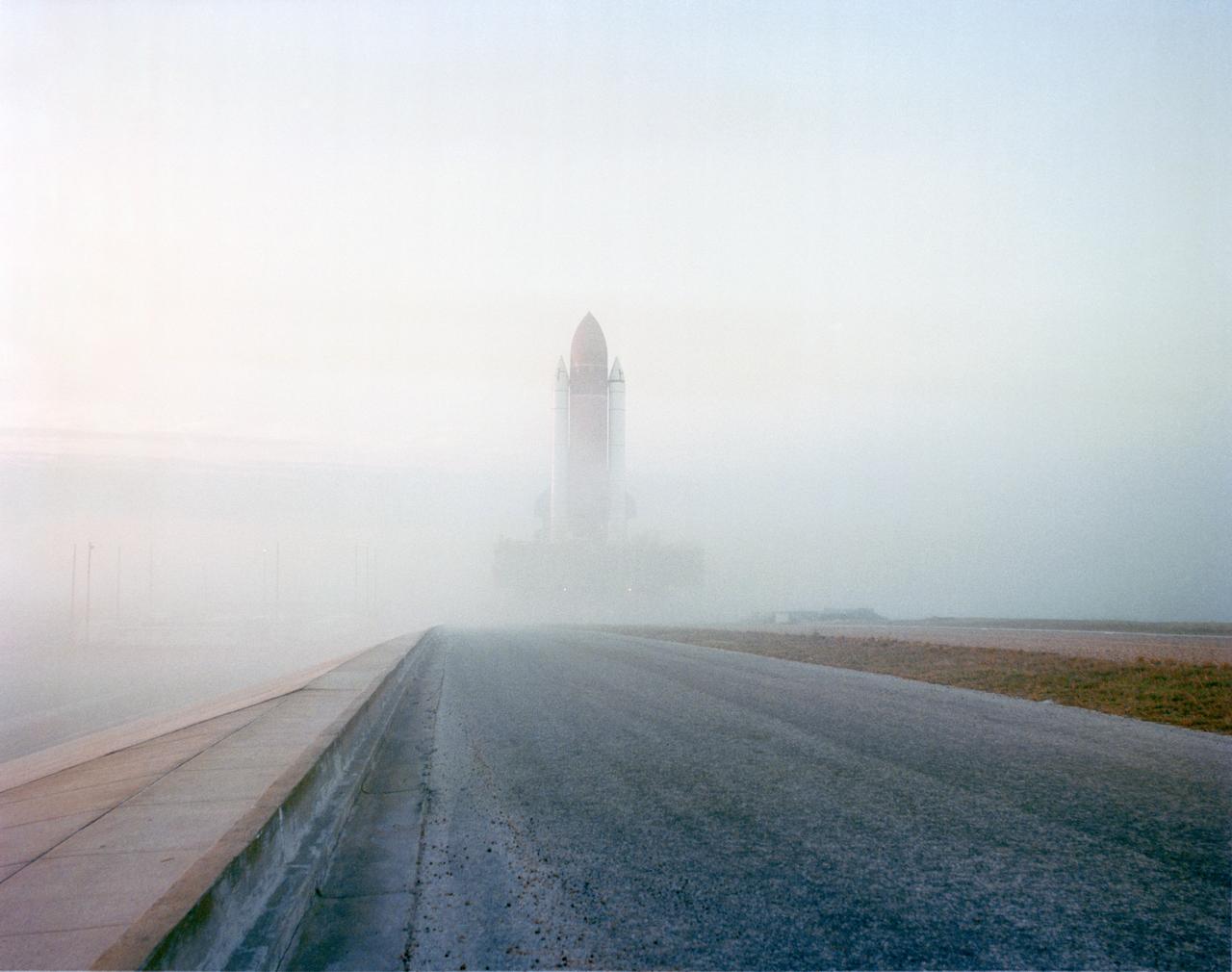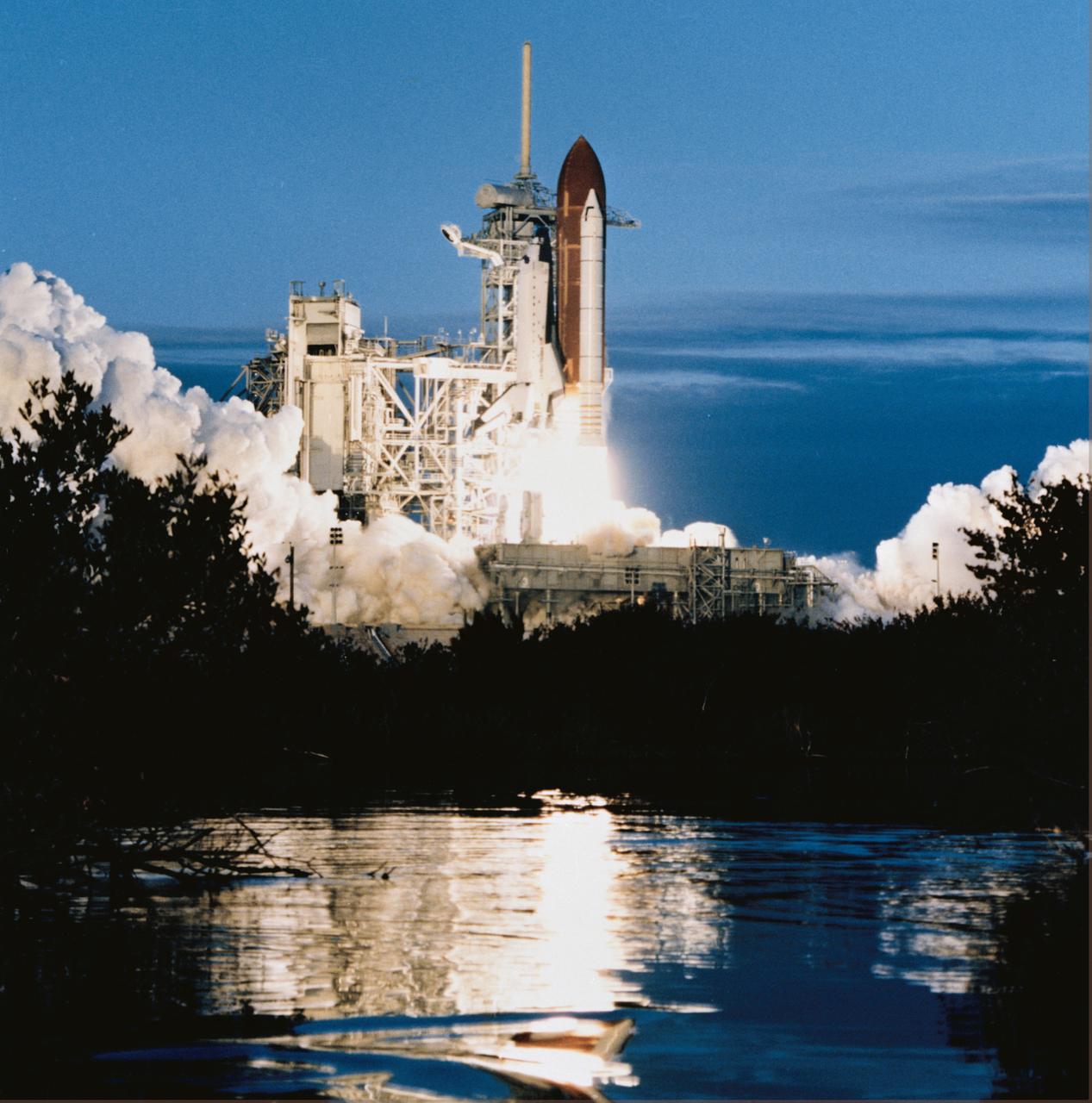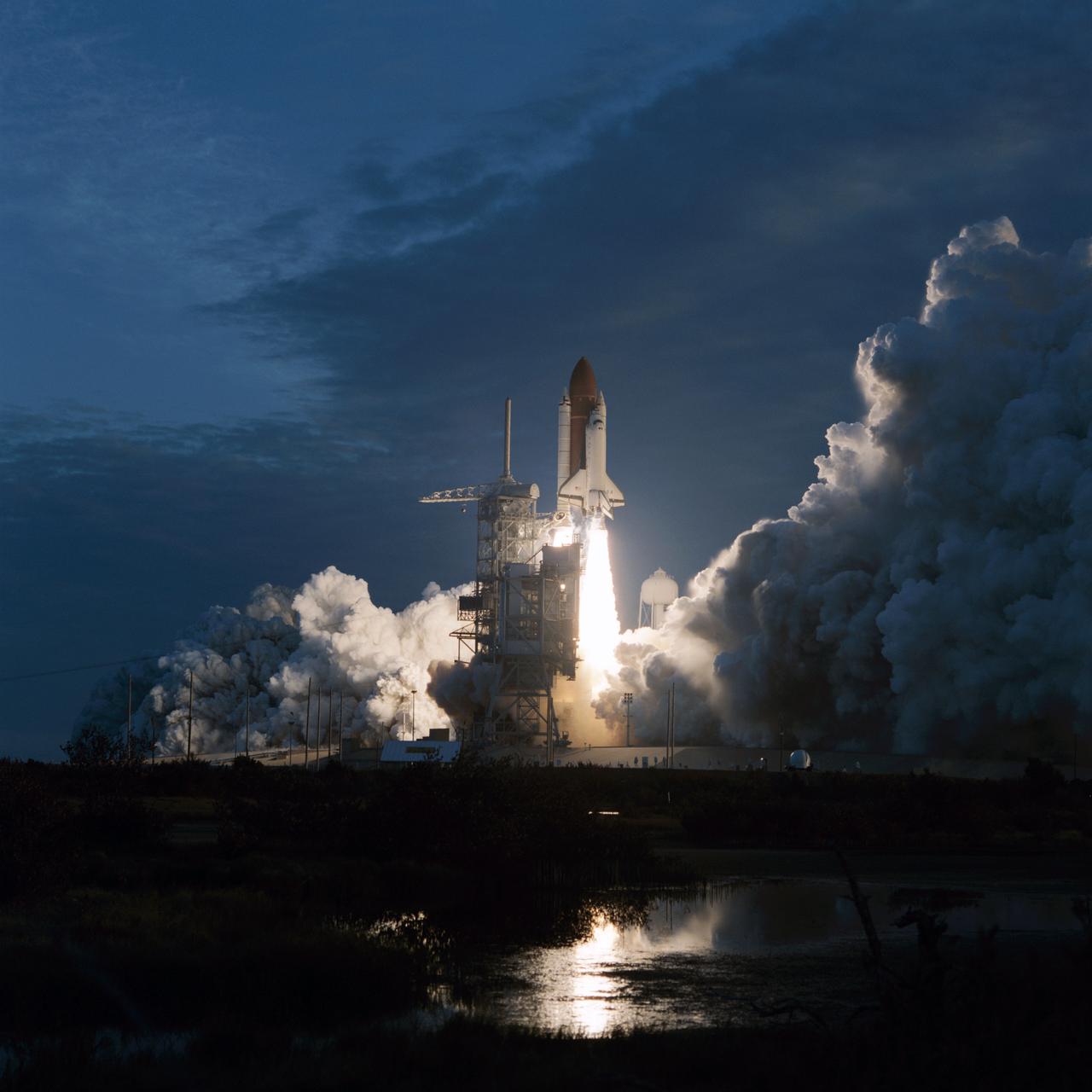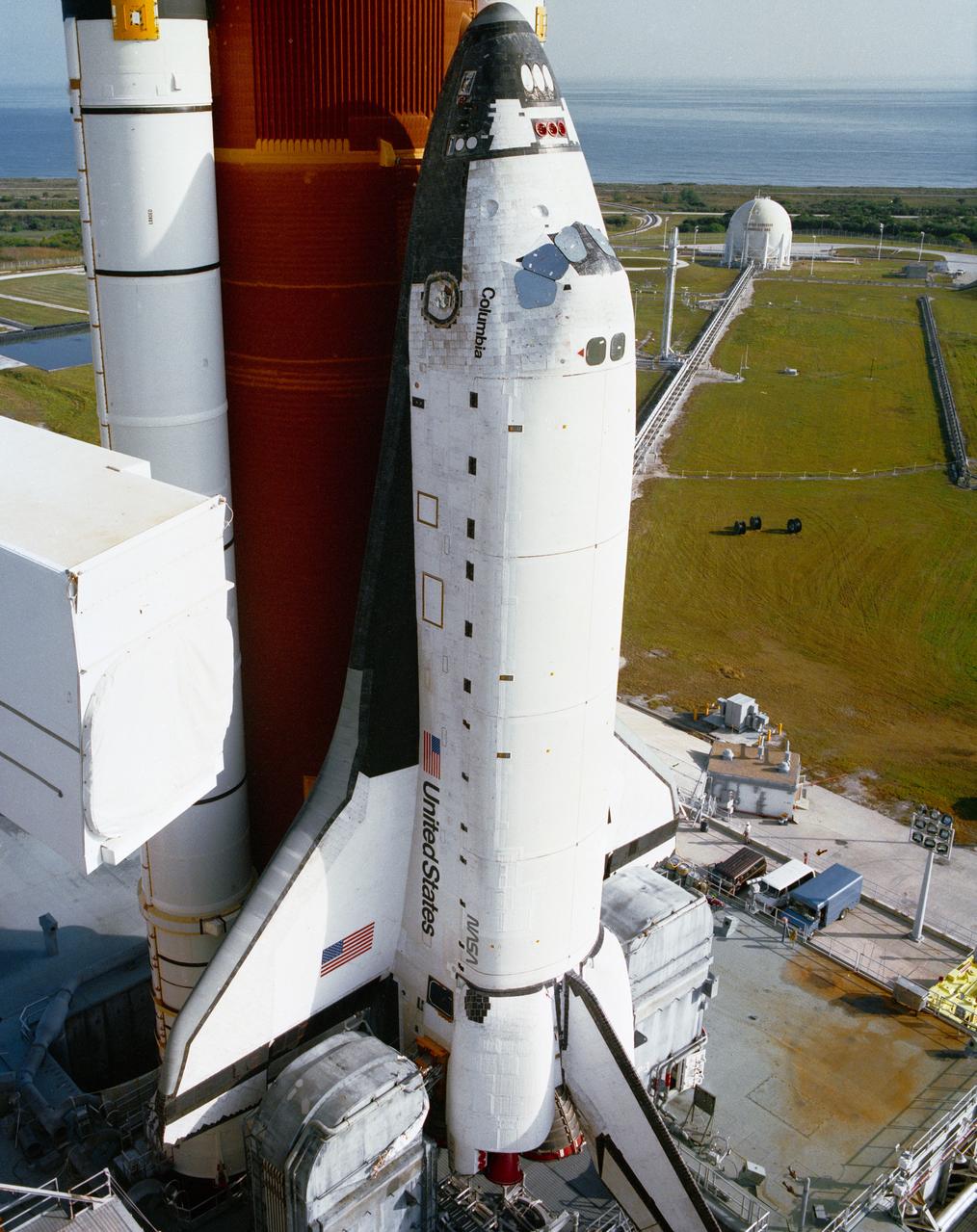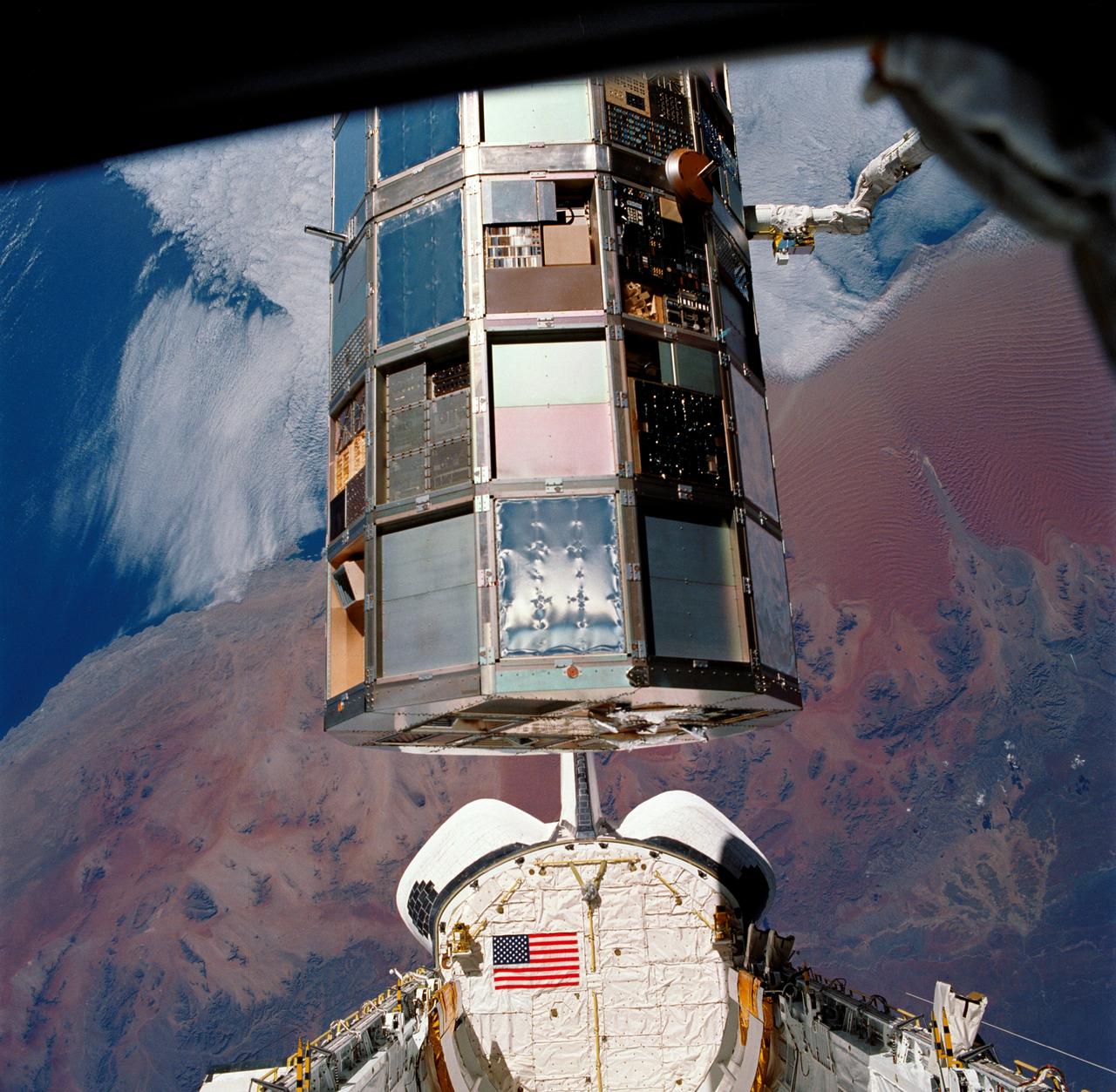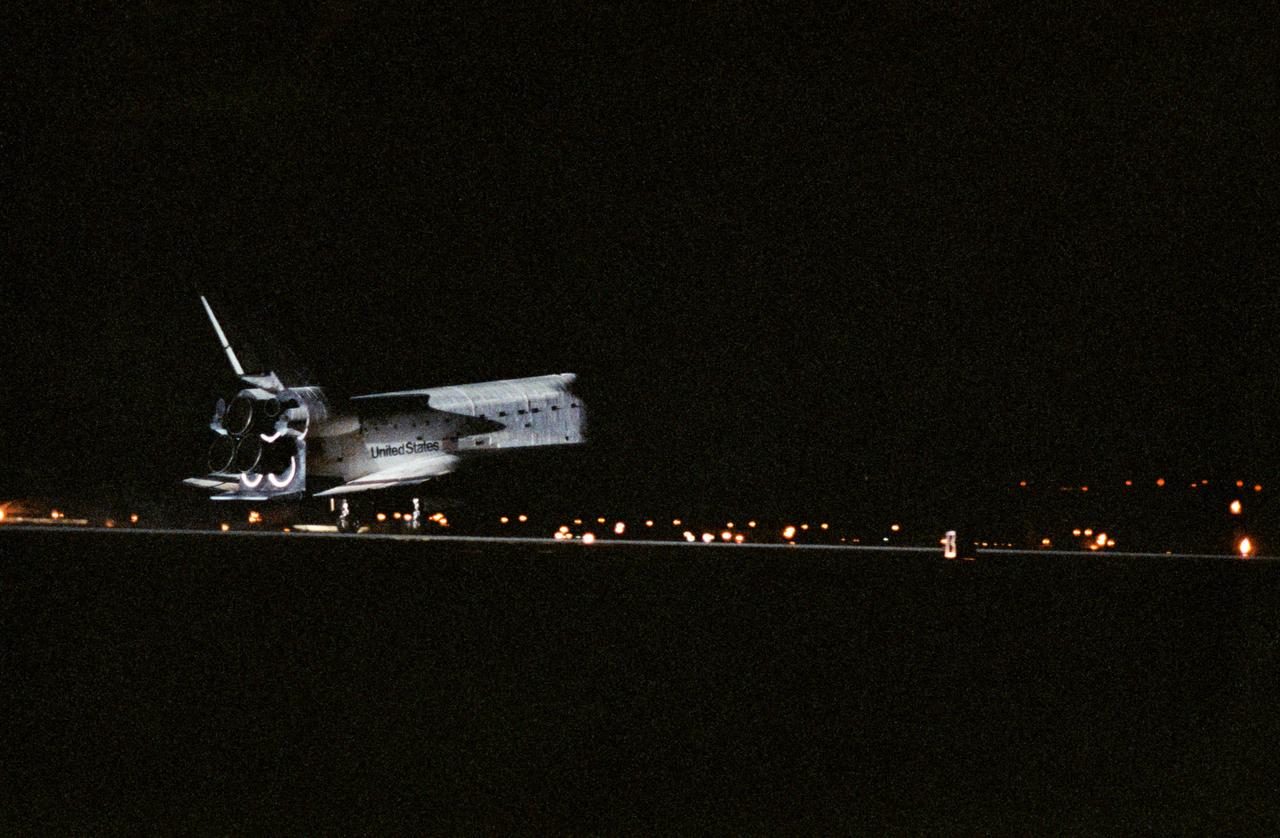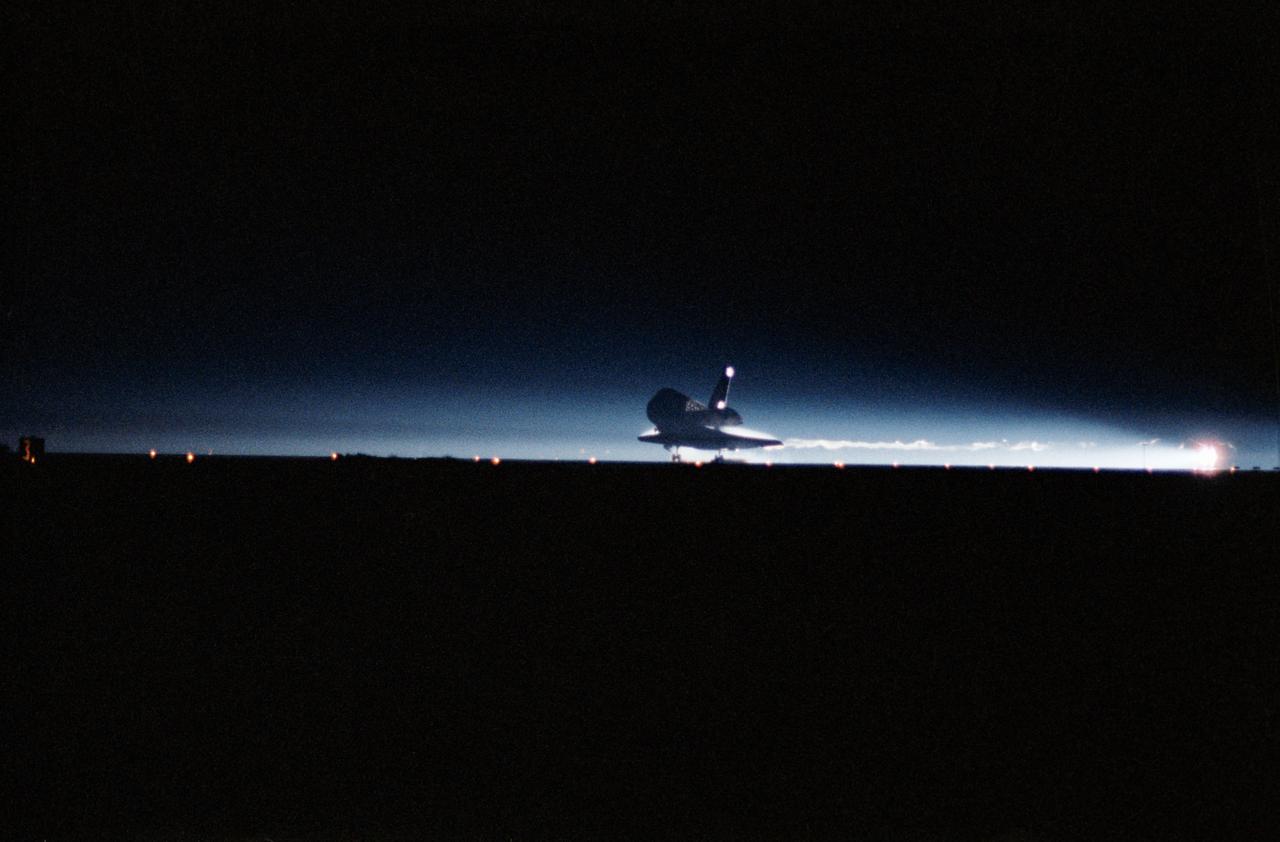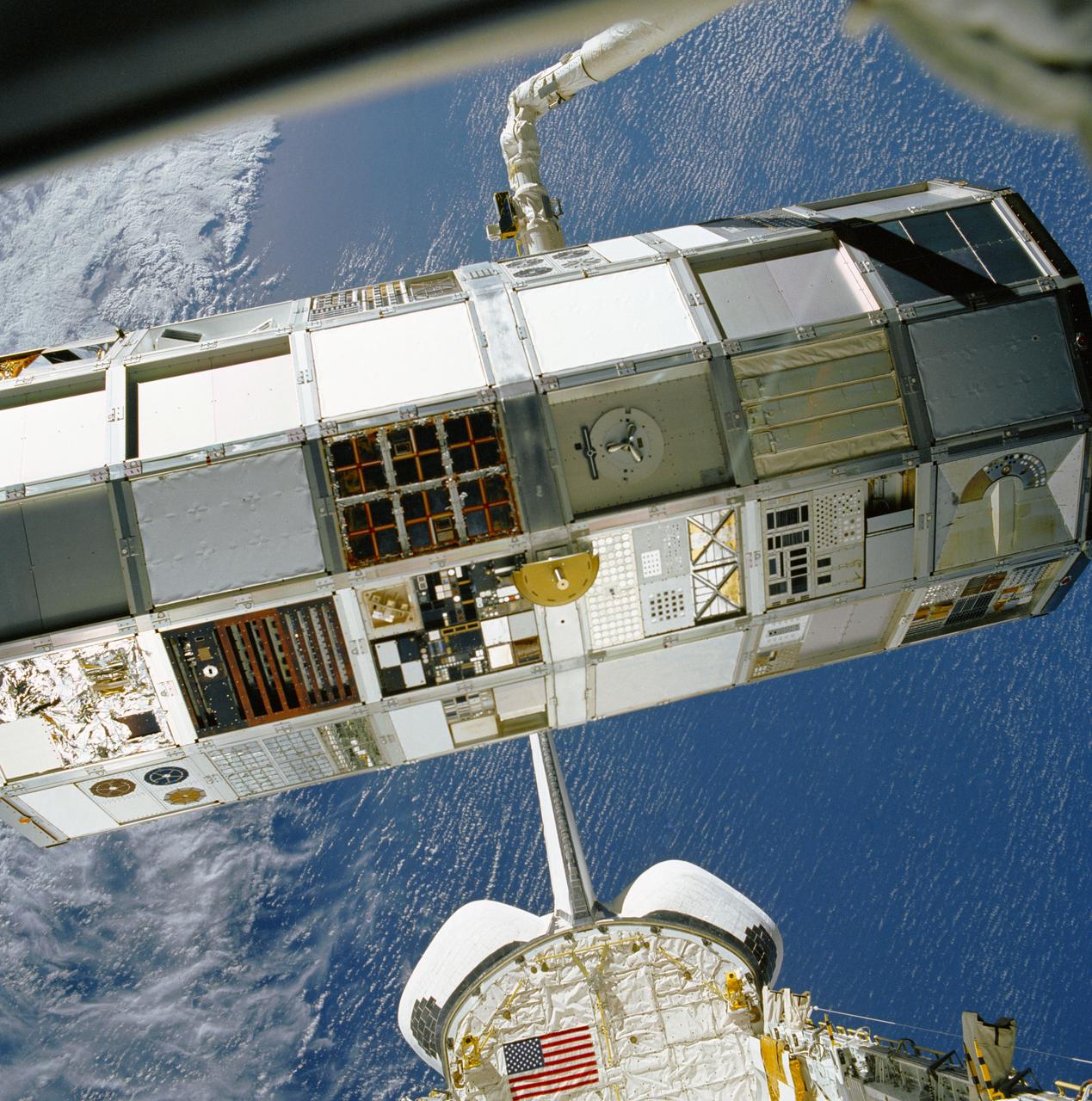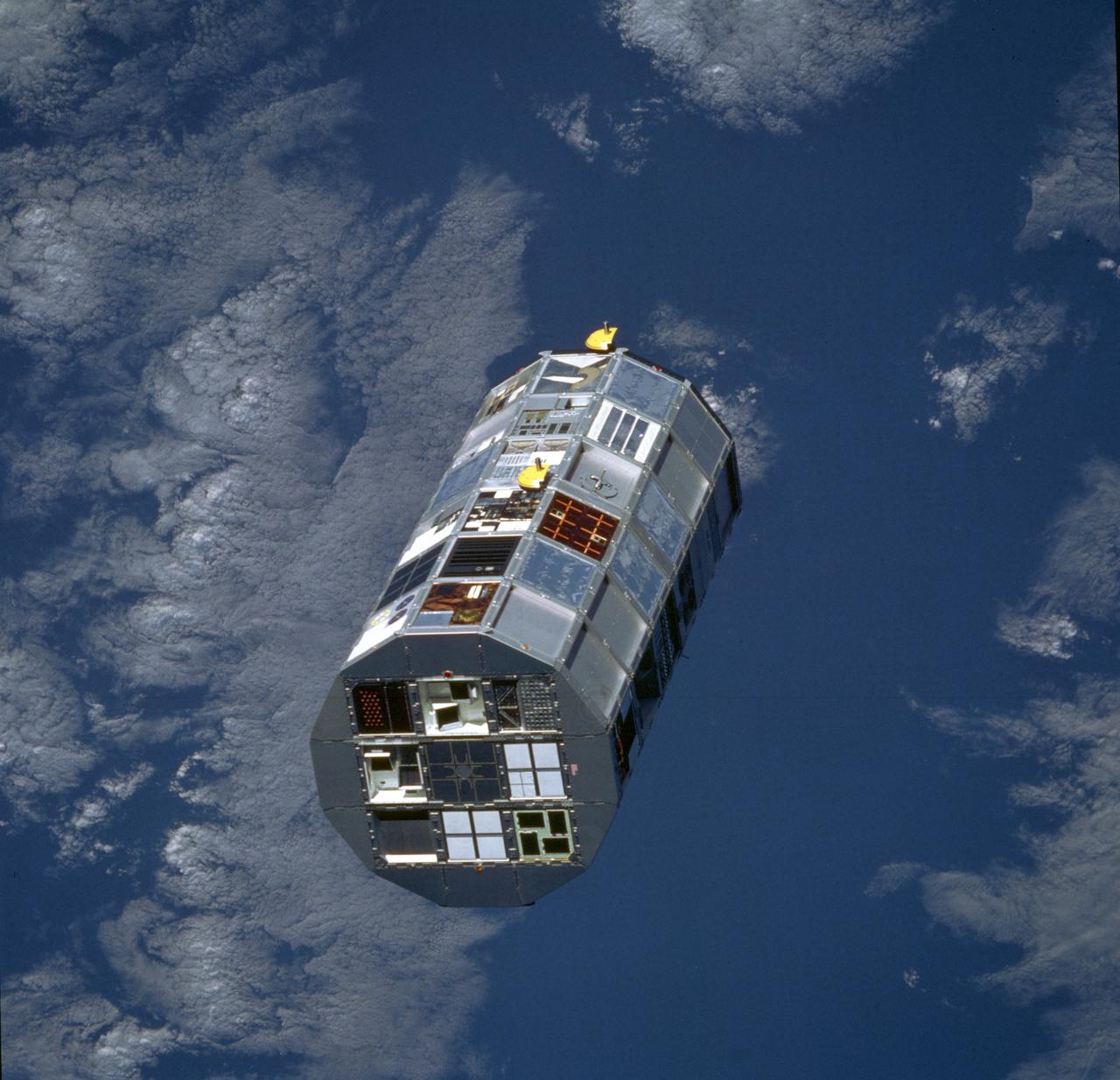STS-32 Fact Sheet
By Cliff Lethbridge

STS-32 — Columbia
33rd Space Shuttle Mission
9th Flight of Columbia
Crew:
Daniel C. Brandenstein, Commander
James D. Wetherbee, Pilot
Bonnie J. Dunbar, Mission Specialist
Marsha S. Ivins, Mission Specialist
G. David Low, Mission Specialist
Orbiter Preparations:
Tow to Orbiter Processing Facility – August 22, 1989
Rollover to Vehicle Assembly Building – October 16, 1989
Rollout to Launch Pad 39A – November 28, 1989
Launch:
January 9, 1990 – 7:35:00 a.m. EST. Launch had been scheduled for December 18, 1989 but was rescheduled to allow verification of modifications to Launch Pad 39A, which was being used for the first time since STS-61C in January, 1986. Launch attempt on January 8, 1990 was scrubbed due to poor weather. January 9 launch occurred as scheduled with no delays.
Landing:
January 20, 1990 – 1:35:36 a.m. PST at Runway 22, Edwards Air Force Base, California. Rollout distance was 10,096 feet. Rollout time was 62 seconds. Mission duration was 10 days, 21 hours, 0 minutes, 36 seconds. Landing occurred during the 172nd orbit.
Mission Summary:
The SYNCOM-IV-F5 defense communications satellite (also called LEASAT-5) was deployed. A third stage Minuteman solid perigee kick motor propelled the satellite to geosynchronous orbit.
The Long Duration Exposure Facility (LDEF), deployed during mission STS-41C, was retrieved using the Shuttle’s remote manipulator system.
Other payloads included the Characterization of Neurospora Circadian Rhythms (CNCR), Protein Crystal Growth (PCG), Fluid Experiment Apparatus (FEA), American Flight Echocardiograph (AFE), Latitude/Longitude Locator (L3), Mesoscale Lightning Experiment (MLE), IMAX camera system and Air Force Maui Optical Site (AMOS) experiment.
SELECTED NASA PHOTOS FROM STS-32
